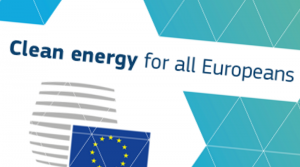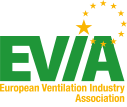European Ventilation Industry Association (EVIA) calls upon decision makers to strengthen provisions ensuring IAQ and for Heat Recovery to be recognised as a waste energy technology
20/04/2017

Brussels, 20 April 2017–The European Ventilation Industry Association (EVIA) released its positions on the ongoing review of the Energy Performance of Buildings Directive (EPBD) and the Renewable Energy Directive (RED).
The revision of these Directives is a great opportunity to drive the much needed changes and improvements in the existing building stock and promote systems and solutions that result in high Indoor Air Quality, low energy consumption and consumers’ empowerment. They are therefore an essential tool to meet our climate and energy targets and improve citizens’ health, comfort and productivity.
EVIA calls upon decision-makers to strengthen provisions ensuring proper Indoor Air Quality (IAQ), while taping into the huge energy savings potential of the existing building stock and raising awareness among consumers on optimized behaviours.
In addition EVIA calls upon decision makers to put in place an adequate regulatory framework for Heat Recovery, recognizing it as a waste energy technology in the revised Renewable Energy Directive (RED) and accounting for the renewable part of the energy recovered by Heat Recovery Ventilation units (HRV).
For more information please see:
- EVIA Position paper on EPBD: Achieving both high indoor air quality and low energy consumption in European buildings – April 2017
- EVIA Position paper on RED: – Why Heat Recovery should be treated in the same manner as Renewable Energy – April 2017
About EVIA
The European Ventilation Industry Association (EVIA) was established in Brussels in July 2010. EVIA’s mission is to represent the views and interests of the ventilation industry and serve as platform between all the relevant European stakeholders involved in the ventilation sector, such as decision-makers at the EU level as well as our partners in EU Member States.
Our membership is composed if more than 35 member companies and 6 national associations across Europe realising an annual turnover of over 7 Billion Euros and employing more than 45,000 people in Europe.
EVIA aims to promote highly energy efficient ventilation applications across Europe, with high consideration for health and comfort aspects. Fresh and good indoor air quality is a critical element of comfort and contributes to keeping people healthy in buildings.

